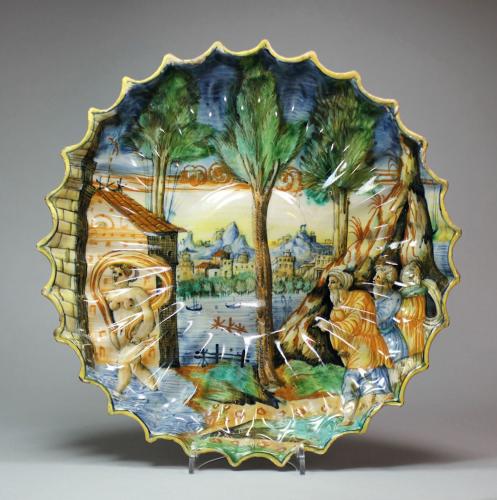
Price on application
This object is eligible for a Certificate of BADA Provenance
The BADA Standard
- Since 1918, BADA has been the leading association for the antiques and fine art trade
- Members are elected for their knowledge, integrity and quality of stock
- Our clients are protected by BADA’s code of conduct
- Our dealers’ membership is reviewed and renewed annually
- Bada.org is a non-profit site: clients deal directly with members and they pay no hidden fees
Delft blue and white plate.
Circa 1760.
Decorated to the central roundel with a scene in the chinoiserie style depicting a lone figure fishing on a jetty beside a strange bulbous structure, underneath a hanging willow issuing from a rocky cliff face. The rim with a narrow band of leaves.
Delftware (tin-glazed earthenware) was produced in England and The Netherlands, and chinoiserie designs were common. At a time when exported Chinese and continental ceramics remained incredibly expensive and before porcelain technology had been perfected, Delftware offered a cheaper alternative for the section of society who could not afford Asian export porcelain but wanted to participate in the fashion for ‘the exotic’.
Stock number
W494The BADA Standard
- Since 1918, BADA has been the leading association for the antiques and fine art trade
- Members are elected for their knowledge, integrity and quality of stock
- Our clients are protected by BADA’s code of conduct
- Our dealers’ membership is reviewed and renewed annually
- Bada.org is a non-profit site: clients deal directly with members and they pay no hidden fees


